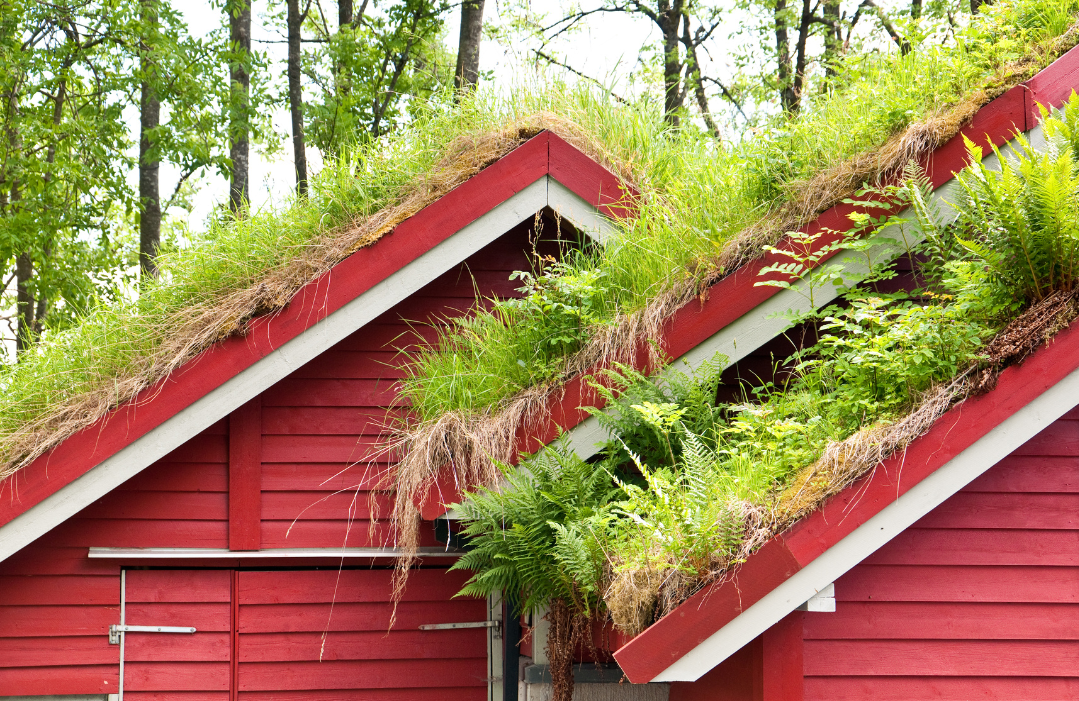
In recent years, environmental impact has been a topic on many people’s minds, and you might be searching for ways to live more sustainably. Over time, sustainable architecture strategies can positively affect air quality and resources, and even save you money. Sustainable architecture isn’t just for people who are constructing a new home. Anyone can apply these strategies to make their home an eco-friendly place to live.
What is Sustainable Architecture?
Sustainable architecture is a term that refers to the way a building is designed, constructed and inhabited. The building is designed to maximize natural resources like airflow and sunlight and is constructed using environmentally friendly materials. It also uses renewable energy sources for heating, cooling and plumbing.
Active vs. Passive Sustainable Design
Homes built to be sustainable typically use an active sustainable design, a passive sustainable design, or a mixture of the two.
Active sustainable design strategies often use purchased energy sources like electricity and gas as energy sources. However, active strategies can also include solar panels, wind turbines, geothermal heating and cooling or high-efficiency HVAC systems that leave small environmental footprints compared to their less sustainable alternatives.
Passive sustainable design strategies use natural elements for energy conservation. These designs will consider factors such as wind patterns and sun orientation to construct a house that uses as little energy from machines as possible. Homes will have windows that allow cross ventilation for better airflow during the warm months and more insulation for warmth in the winter.

Strategies for Building a Sustainable Home
If building a sustainable home is important to you, then there are several things you can do to make it happen:
Only build the size you need – A smaller home requires fewer materials and less energy to run. A tiny home may not be for everyone, but a small home is typically large enough to live comfortably.
Green building materials – Whether you are building a home from scratch, or doing renovations on your existing home, an easy way you can make your home more sustainable is by using materials derived from natural materials and renewable sources. These can include cork, bamboo, stone, straw, and brick. You can also incorporate recycled plastics and reclaimed wood. In fact, you can build an entire tiny home from a recycled shipping container!
Green roofs – Although green roofs are more common in larger residential buildings like apartments, they can be built onto a single-family home. They typically feature a rooftop garden or grassy area with trees and plants that can improve air quality and moderate the temperature inside the house.
Native landscaping – A manicured artificial lawn is one of the worst things you can have if you want to build a sustainable home because it contributes to rising carbon dioxide emissions and loss of wildlife. Native landscaping incorporates trees, shrubs, and flowers naturally occurring in a region into a home’s yard and is a much better option for the environment. Using native landscaping helps wildlife thrive, promotes biodiversity, and reduces air pollution.

Strategies for Making Your Existing Home More Sustainable
If you already live in a home that is not very sustainable but want to make it more environmentally friendly, there are a few things you can do:
Compost – Instead of throwing out food waste, toss them in a compost bin and use it later as fertilizer for your garden. It will also save the landfill from being unnecessarily used.
Conserve water – Canada is one of the worst countries in the world for water usage. Be mindful of the amount of water you use, and strive to use less. You can take shorter showers, install low-flow, dual-flush toilets, and use low-volume bathroom and kitchen faucets. Outside, collect rainwater and use it later for watering your plants.
Use energy-efficient technology – One of the first things you can do to reduce energy consumption in your home is to swap out all your lightbulbs for LED bulbs which use less energy and last longer. A smart thermostat is a bit larger of an investment but can help regulate heating and cooling in your home while you are not there.
In a sustainable home, you can feel good about choosing to be more eco-friendly while not giving up your comfort. Everyone can do something to make their home more sustainable – even simply using a little less water can make a difference. With just a few changes, your home can be less impactful on the environment.
Courtesy: remax.ca
Posted by Infinity Admin on
I really enjoyed reading your article on sustainable architecture and how it can positively impact our environment and save money. The clear explanation of sustainable architecture and its focus on maximizing natural resources like airflow and sunlight was informative. I appreciated learning about the difference between active and passive sustainable design strategies. The active design strategies incorporating renewable energy sources such as solar panels, wind turbines, and geothermal systems were particularly interesting. It's great to see how these technologies can significantly reduce our environmental footprint. The discussion on passive sustainable design and its emphasis on utilizing natural elements for energy conservation was also enlightening. The consideration of wind patterns, sun orientation, and the use of windows for cross ventilation and insulation showcased practical ways to minimize energy consumption. What I found especially valuable about your article is the emphasis on the fact that sustainable architecture is not limited to new home construction but can be applied to any existing home. This highlights the accessibility of sustainable practices and encourages everyone to make their homes more eco-friendly. Thank you for providing such a comprehensive overview and inspiring readers to embrace sustainable architecture for a greener future.
Posted by cherry morgan on Thursday, July 6th, 2023 at 12:44amLeave A Comment